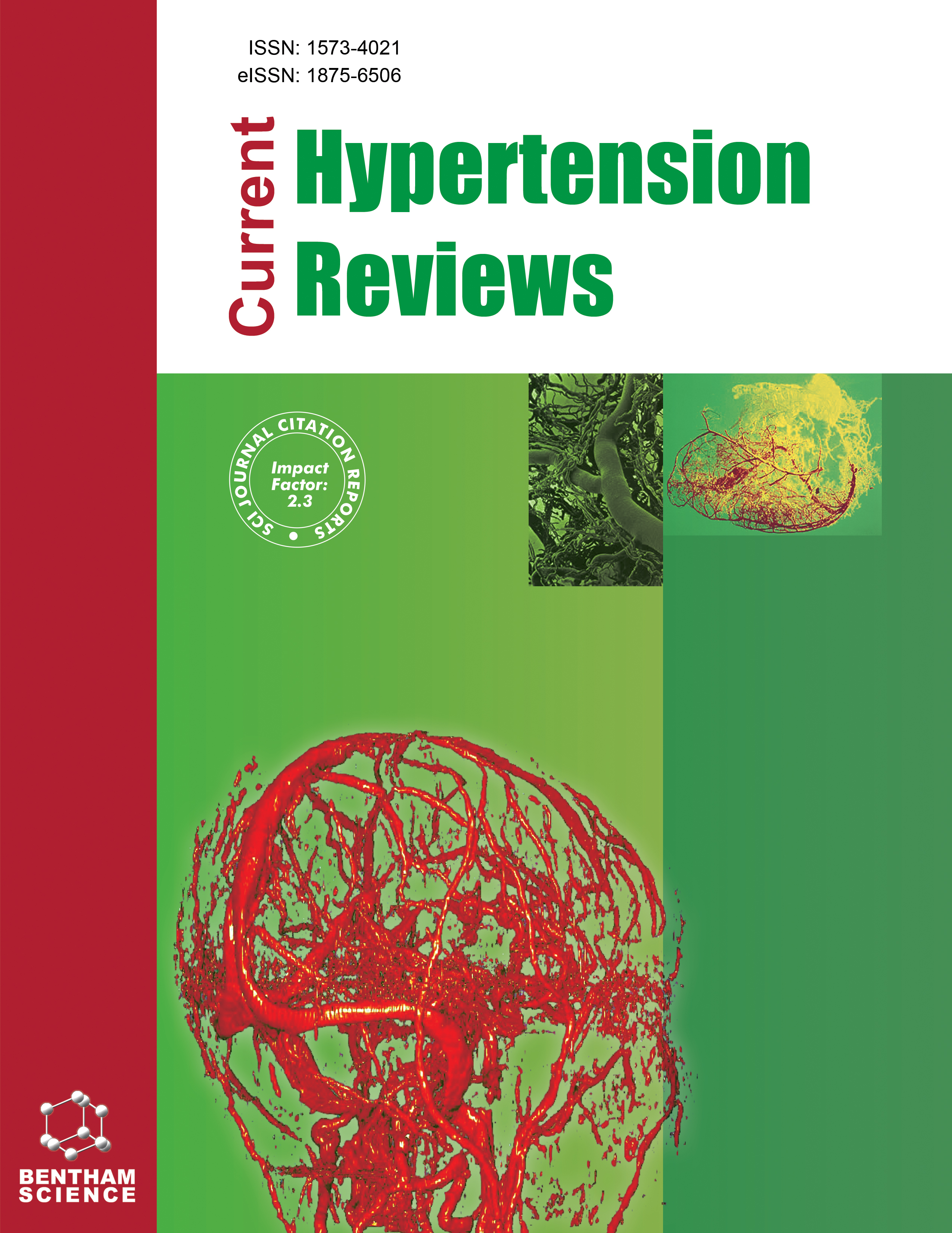- Home
- A-Z Publications
- Current Hypertension Reviews
- Previous Issues
- Volume 1, Issue 2, 2005
Current Hypertension Reviews - Volume 1, Issue 2, 2005
Volume 1, Issue 2, 2005
-
-
The Use of the Dahl Rat to Understand the Genetics of Human Hypertension: 35 Years of Data
More LessAuthors: Robert S. Danziger and Corbin D. JonesThe Dahl rat is one of the most widely studied rodent models of hypertension with over 1600 references in the literature over the past 35 years. While many studies have focused on physiology, more recent investigations have concentrated on the genetics. While there is already evidence for the Dahl rats' value in probing the genetics of human hypertension, there are several reservations and significant limitations.
-
-
-
Vascular Endothelin and Hypertension - From Receptors to Medicine
More LessAuthors: Sheree M. Beane and Raouf A. KhalilThe last two decades have witnessed great advances in our understanding of the role of the vascular endothelin (ET) system in the control of blood pressure. The role of ET as one of the most potent endothelium-derived vasoconstrictors is now complemented with a newly discovered role in vascular relaxation. The transcription of the ET genes in endothelial cells leads to the formation of preproET and big ET, which are furth Read More
-
-
-
Angiotensin II Receptor Blocker as an Inverse Agonist: A Current Perspective
More LessAuthors: Shin-ichiro Miura, Masahiro Fujino and Keijiro SakuAngiotensin II (Ang II) receptor blockers (ARBs) are highly selective for the Ang II type 1 receptor (AT1), which is a member of the G protein-coupled receptor superfamily (GPCRs), and block the diverse effects of the agonist Ang II. Many studies have shown that these agents are safe and effective. In addition to their beneficial effects against hypertension, ARBs have also been associated with the regression of left ventricul Read More
-
-
-
Mediterranean Diet and Hypertension; From the Clinical and Epidemiologic Evidences to Prevention
More LessAccording to the World Health Organization the number of hypertensive people is estimated to be 600 million. Of them, a considerable proportion is untreated, while 12% to 15% is uncontrolled. The association between dietary habits and the development, as well as the control of hypertension has long been investigated in many clinical and epidemiological studies. Moreover, Mediterranean-style diet has been associated with re Read More
-
-
-
Treatment of Tachycardia in Hypertension: Where Do We Stand Now?
More LessMounting evidence shows that elevated heart rate is associated with a greater risk of developing hypertension and atherosclerosis and that it is a potent predictor of cardiovascular morbidity and mortality. These relationships have been shown not only in general populations but also among hypertensive individuals, with important implications for the treatment of hypertension. Recent evidence suggests that the predictive po Read More
-
-
-
Improving Antihypertensive Agent Selection to Promote Nephroprotection
More LessIntroduction: Despite improved control rates of hypertension in the United States during the last twenty years, the rate of chronic kidney disease (CKD) and end-stage renal disease (ESRD) has steadily increased for the same time period. Purpose: The purpose for this review is to examine the evidence that the choice of antihypertensive therapy makes a difference in the promotion of nephroprotection. Method: A systematic co Read More
-
-
-
The Role of Chymase in Vascular Remodeling and Tissue Fibrosis
More LessAuthors: Shinji Takai, Denan Jin, Michiko Muramatsu and Mizuo MiyazakiChymase generates angiotensin II which plays a crucial role in vascular remodeling. In clinical studies, an angiotensin II receptor blocker was successful in preventing restenosis after percutaneous coronary intervention, but an angiotensin II-converting enzyme inhibitor was not. In dog, chymase activity was significantly increased in vessels injured by a balloon catheter, and a chymase inhibitor and an angiotensin II recep Read More
-
-
-
Adrenomedullin in Hypertension
More LessAuthors: Toshio Nishikimi and Hiroaki MatsuokaAdrenomedullin (AM) is a potent vasodilatory peptide originally discovered in human pheochromocytoma tissue. The gene expression of AM is widely distributed in the cardiovascular system and many physiological actions of AM on cardiovascular system have been reported. Previous studies demonstrated that the plasma AM level is increased in patients with hypertension and further increased in patients with organ d Read More
-
-
-
Role of Salt and Potassium in Hypertension and the Associated Organ Damages
More LessAuthors: Katsuyuki Ando and Toshiro FujitaExcessive salt intake is well-known to be one of the major environmental factor not only to develop human hypertension but also to induce cardiovascular damages. On the other hand, dietary potassium supplementation exerts both anti-hypertensive and cardiovascular protective effects in salt-induced hypertension. In the earlier studies including us, it was suggested that the anti-hypertensive mechanism of dietary Read More
-
Volumes & issues
-
Volume 21 (2025)
-
Volume 20 (2024)
-
Volume 19 (2023)
-
Volume 18 (2022)
-
Volume 17 (2021)
-
Volume 16 (2020)
-
Volume 15 (2019)
-
Volume 14 (2018)
-
Volume 13 (2017)
-
Volume 12 (2016)
-
Volume 11 (2015)
-
Volume 10 (2014)
-
Volume 9 (2013)
-
Volume 8 (2012)
-
Volume 7 (2011)
-
Volume 6 (2010)
-
Volume 5 (2009)
-
Volume 4 (2008)
-
Volume 3 (2007)
-
Volume 2 (2006)
-
Volume 1 (2005)
Most Read This Month
Article
content/journals/chyr
Journal
10
5
false
en


